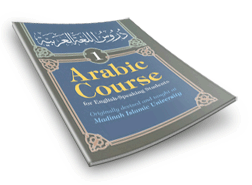MSA
Modern Standard Arabic (MSA), also known as Modern Written Arabic (MWA), is a standardized, literary form of Arabic that developed in the Arab world during the late 19th and early 20th centuries. Here are some key points about MSA:
- Variety and Usage:
- Written Standard: MSA is the language used in literature, academia, print media, mass media, law, and legislation.
- Spoken Approximation: In some contexts, spoken Arabic approximates the MSA written standard.
- Not a First Language: MSA is generally not spoken as a first language, similar to how Contemporary Latin is used.
- Pluricentric Standard:
- MSA is taught throughout the Arab world in formal education.
- It differs significantly from many vernacular varieties of Arabic spoken as mother tongues in the region.
- These vernacular varieties are only partially mutually intelligible with both MSA and with each other, depending on their proximity in the Arabic dialect continuum.
- MSA is considered distinct from Classical Arabic (CA), the written language prior to the mid-19th century.
- There is no agreed-upon moment when CA turned into MSA.
- Linguists debate the criteria that distinguish CA from MSA, but MSA differs most markedly in its synthesis of words from Arabic roots or adaptation of foreign words to describe industrial and post-industrial life.
- MSA is the official language in 27 states, including Algeria, Egypt, Iraq, Jordan, Saudi Arabia, and others.
- Various academies regulate MSA, such as the Supreme Council of the Arabic language in Algeria, the Academy of the Arabic Language in Cairo, and others.
- If you’re interested in learning MSA, you can explore online courses that cover the alphabet, vocabulary, culture, and various topics.
- These courses help you communicate in Arabic with native speakers across different situations
- Distinct from Classical Arabic (CA):
- Official Language and Regulated by Academies:
- Learn MSA:
If you’re eager to learn Modern Standard Arabic (MSA), there are several excellent books that can guide you on your language journey. Here are some highly recommended ones:
1.The Arabic Course

Arabic Course for English-Speaking Students is designed as a college-level course. The three books are split up into 4 levels, each aimed at helping non-native Arabic speakers learn Arabic for Religious studies of Islam. Arabic Course is the current curriculum for the Islamic University of Medina and has been used to teach Arabic for over 40 years to students from all over the world. The course covers Interpretation of the Quran, Hadith, Jurisprudence, Islamic Biography, Islamic History, and classical Arabic Literature. The course interweaves current and classical Arabic so that students will be able to study the full spectrum of Arabic literature including modern expressions used in the Holy Quran, Hadith, and Arabic poetry.

2.Arabic Between Your Hands

Arabic in Your Hands is broken up similarly to Arabic Course in that it has three parts that are then again broken up into four levels. Designed for a non-native speaker, Arabic in Your Hands is great for students who wish to immerse themselves in Arabic culture. Arabic in Your Hands includes activities so that a student may test their knowledge of Arabic as well as a CD in order for them to practice speaking Arabic as well. Arabic in Your Hands is the perfect way to learn Arabic for social interaction quickly and efficiently while still having a lot of fun.
Arabic Between Your Hands Textbook: Volume 1 (Elementary Level, With CD) (Arabic Edition)
Arabic Between Your Hands Textbook: Volume 2 (Middle Level, With MP3 CD)
Arabic Between Your Hands Textbook: Volume 3 (Advanced Level, With CD) (Arabic Edition)
3.The Main Book

The Main Book was designed by the American University of Experts in Arabic Language Education for Non-Native Speakers in order to teach Modern Standard Arabic quickly and efficiently. The Main Book is broken up similarly to the two books above and focuses on daily life in Arabic countries, politics, literature, arts, science, medicine and astronomy. The Main Book comes with a CD that comes with all vocabulary translated into English, French and German as well as phonetics for proper Arabic pronunciation. This is the most popular course for learning Arabic for Non-Native speakers.
al-Kitab al-asasi: A Basic Course for Teaching Arabic to Non-Native Speakers: Volume 1
al-Kitab al-asasi: A Basic Course for Teaching Arabic to Non-Native Speakers: Volume 2
al-Kitab al-asasi: A Basic Course for Teaching Arabic to Non-Native Speakers: Volume 3
4.El Emam Mohammad Ben Soud Islamic University Book

El Emam Mohammad Ben Soud Islamic University Book focuses on teaching formal Arabic for the study of the Islamic religion. To this end, this book covers all subjects and lessons related to Islamic issues and are used to introduce new students who are planning on becoming Islamic Preachers and Scholars to proper Arabic grammar. This is an advanced book and should not be the first course a non-native speaker takes in order to learn Arabic
Book your Free Trial and assist your Arabic Level Now
